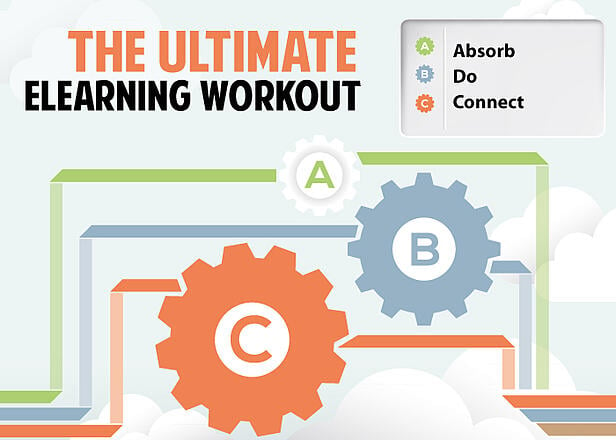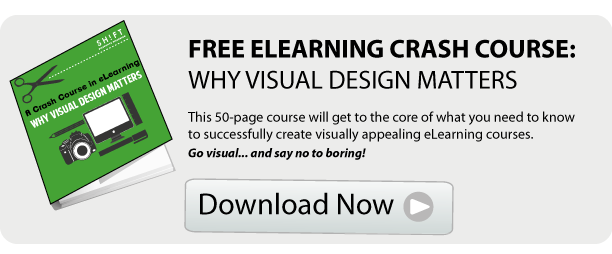Though cardio it's good for your heart and helps your weight, it isn't the only necessary activity your body needs when exercising. Some strength training is also key to tone your muscles. And of course, stretching at the beginning is a must. The same happens in eLearning, you need more than only just text in your courses. While it is important to provide learners with facts and numbers, learners also require adequate experience in practical application and connection to facts to retain information.
The Absorb-Do-Connect model of learning first proposed by W, Horton has become increasingly popular, giving teachers and learners alike deeper insights into the mechanics of learning. These three types of activities make it very easy to come up with an effective eLearning workout:

1) Let's Begin With Some Absorb Activities
In our eLearning workout we are going to compare stretching to preparing or introducing the topic to your learners. Absorb activities will prepare students to do something later on. Give them straightforward and engaging information to digest. This simple stretching exercise should work to not only inform those being taught, but help inspire and cultivate a genuine appreciation for learning.
Absorb activities require learners to read, listen, and watch. Such actions sound passive, but they are an active aspect of learning (Horton, p. 47). Video demonstrations, stories, hyperlinks, and lectures are all methods to allow students to absorb information easily. Videos are able to convey information quickly and effectively, while providing learners with literature to evaluate may be useful in more research intensive circumstances.
Regardless of the method chosen, it is important to recognize how varied learning environments or topics can benefit from different modes of presentation. Incorporating absorb methods when communicating facts or ideas will play an essential part in the 'do' and 'connect' phases later on. Fostering effective eLearning development first starts with conveying a high volume of information in way that can easily be recollected by the learner.
2) Let's Add Some Cardio (Action) to the Workout!
Allow learners to do something with what they have learned. The "do" phase is SO important in our eLearning workout that it is encouraged for learners to spend up to 50% of his or her time involving in these activities (Horton, p.1).
Discovery activities allow learners to break new ground and help get the most out of the 'do' aspect that is essential to effective learning. Scenarios, system simulations and role playing scenarios are forms of discovery activities that help tangibly illustrate to students the information they have just learned. Games can also help put the passive knowledge acquired during the absorb phase to work, ensuring students retain the information while also broadening their understanding of the material.
The hands-on trial and error experience students gain during the do phase is essential. Putting knowledge into action through different activities will keep information fresh while also demonstrating the fun to be found in learning.
3) Time to get stronger!
After stretching and some action it's time for strength training With strength training, you lift weights to strengthen the muscles. The heavy lifting of our eLearning workout is focused on real world connections; in helping students grow more brain connections.
Guide learners in finding ways to connect dots and produce results in their endeavors. The connect part of effective eLearning development consists of bridging the gap between the previous two components. While the absorb phase provides the information, and the do phase puts it all into practical context, the connect phase should aim to reflect or expand upon the entire experience in a number of ways.
Group discussions, collaborative work, rhetorical questions, examples and various modes of problem solving are all essential to 'connect' the learner to what is being taught. This is a good chance to introduce an imaginary task to learners that requires glossaries, article citations or Internet research to complete. An individual will begin to pick up on patterns, rules or distinctions much more easily while also practicing critical analysis, guided research and evaluation skills.
The connect phase makes it possible to summarize an array of material, tie everything together and touch up upon the main points being discussed.
Try mixing up the routine!
For effective eLearning development to take place, the important components of absorbing, doing and connecting information must take place. Without a balance of all three elements, learners may struggle to understand instructions or assignments being provided and have difficulty retaining critical information. Effective eLearning can often be dependent upon the conscious application of these three principles.
So a good rule of thumb is to include all three activities — absorpotion, do, and connect — in your eLearning workout. Diversifying the workout will ensure you give all your learners some love.









